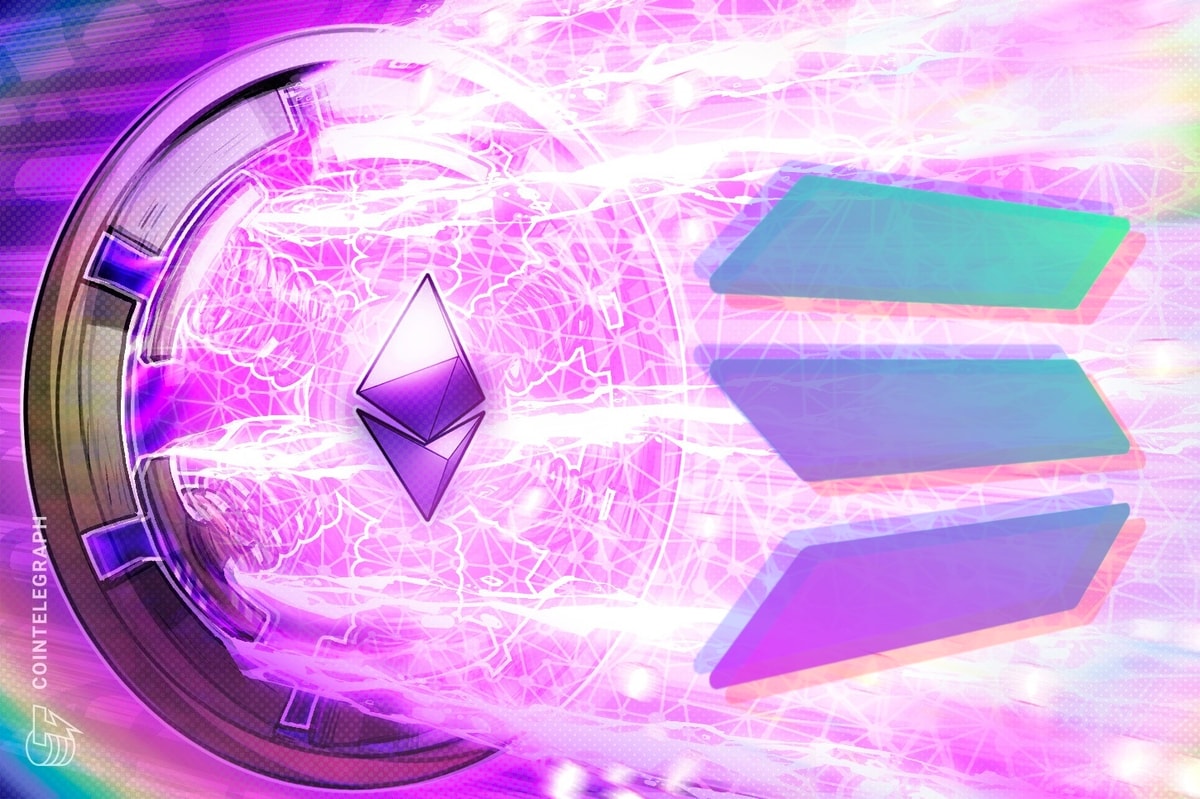Ethereum Merge anniversary — 99% energy drop but centralization fears linger
3 min read

One year after its historic transition to proof of stake, Ethereum has seen a massive reduction in energy use and a marked improvement in access to the network, however, a number of technical issues still mark the road ahead.
The Merge was executed on Sept. 15, 2022 — an event that saw the Ethereum mainnet merging with a separate proof-of-stake blockchain called the Beacon Chain.
The most noticeable improvement to Ethereum post-merge was the seismic shift from an energy-guzzling proof-of-work (PoW) consensus mechanism to PoS, which saw the Ethereum network drastically reduce its total power consumption.
According to
Notably, Lido voted by a 99.81% majority not to self-limit back in June, leading Ethereum advocate Superphiz to declare that the the staking providers had “expressed an intention to control the majority of validators on the beacon chain.”
Lido voted by a 99.81% majority not to self-limit. They have expressed an intention to control the majority of validators on the beacon chain.https://t.co/T16rTdM3gm
— superphiz.eth ️ (@superphiz) August 31, 2023
This move has led to widespread concerns over the potential centralization of validation on Ethereum.
“Lido presently controls 32.26% of all staked Ether on the network worth over $14 billion. In the long run I am confident that Ethereum is better off with liquid staking than without it, however, there are many challenges that still need to be overcome,” Feeny concluded.
Feeny also noted that the most pressing concern for Ethereum in the immediate future was the growing regulatory pressure against crypto and blockchain in the United States more broadly.
“Regulatory bodies, particularly in the U.S. appear to be hellbent at the moment on eliminating the U.S.-based blockchain industry,” he said.
It would be devastating for Ethereum and the global blockchain community if it becomes too difficult for blockchain companies to operate in the US.”
Outside of staking, client diversity also remains a central issue. On Sept. 5, Vitalik Buterin took to the stage at Korea Blockchain Week to discuss the six key problems that need addressing to solve the problem of centralization.
Currently, the majority of the 5,901 active Ethereum nodes are being run through centralized web providers like Amazon Web Services, which many experts claim leaves the Ethereum blockchain exposed to a centralized point of failure.

In Buterin’s view, in order for Ethereum to remain sufficiently decentralized in the long-term it needs to be easier for everyday people to run nodes, which means drastically reducing costs and hardware requirements for node operators.
Buterin’s primary solution was the concept of statelessness, which removes the reliance on centralized servers by reducing data requirements for node operators to near-zero.
“Today, it takes hundreds of gigabytes of data to run a node. With stateless clients, you can run a node on basically zero.”
While this was Buterin’s most prominent concern for the centralization issue, he explained that these problems may not be solved for another 10 to 20 years.
Magazine: NFT collapse and monster egos feature in new Murakami exhibition






